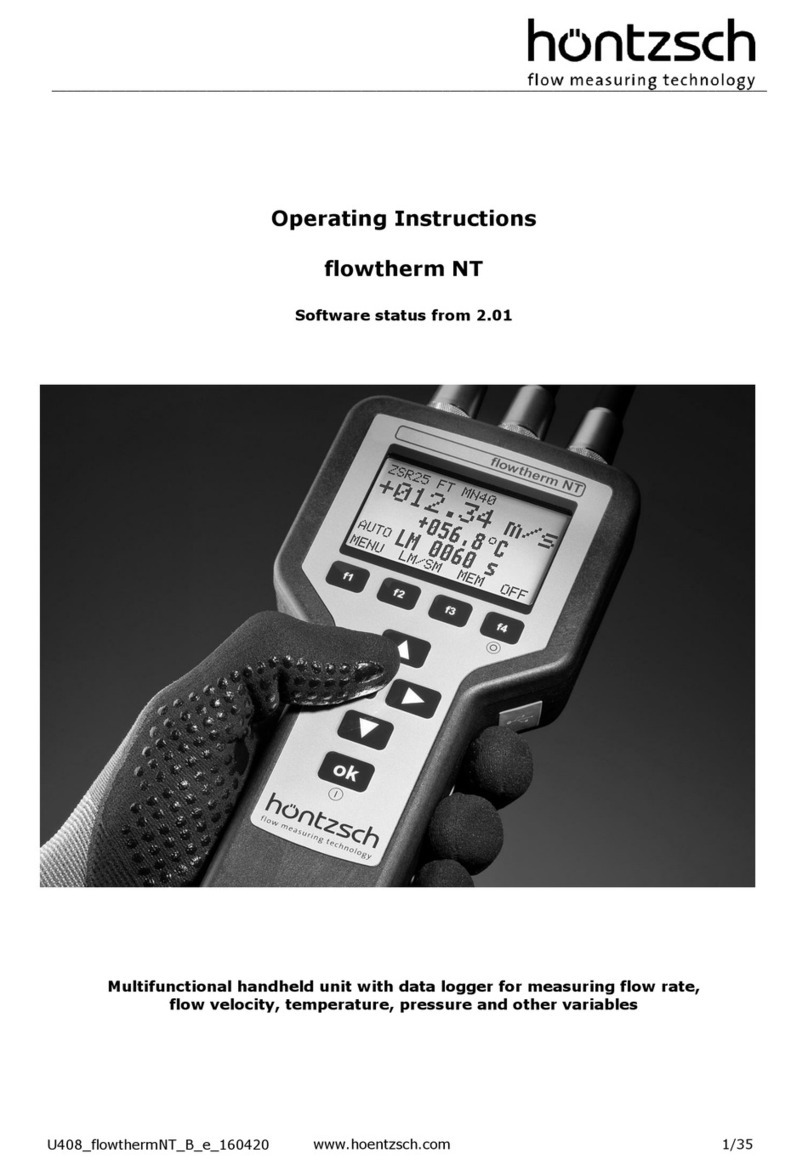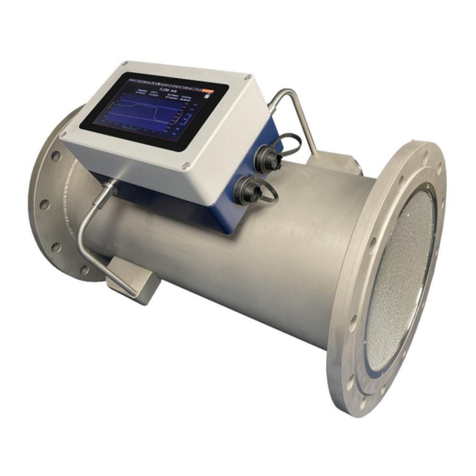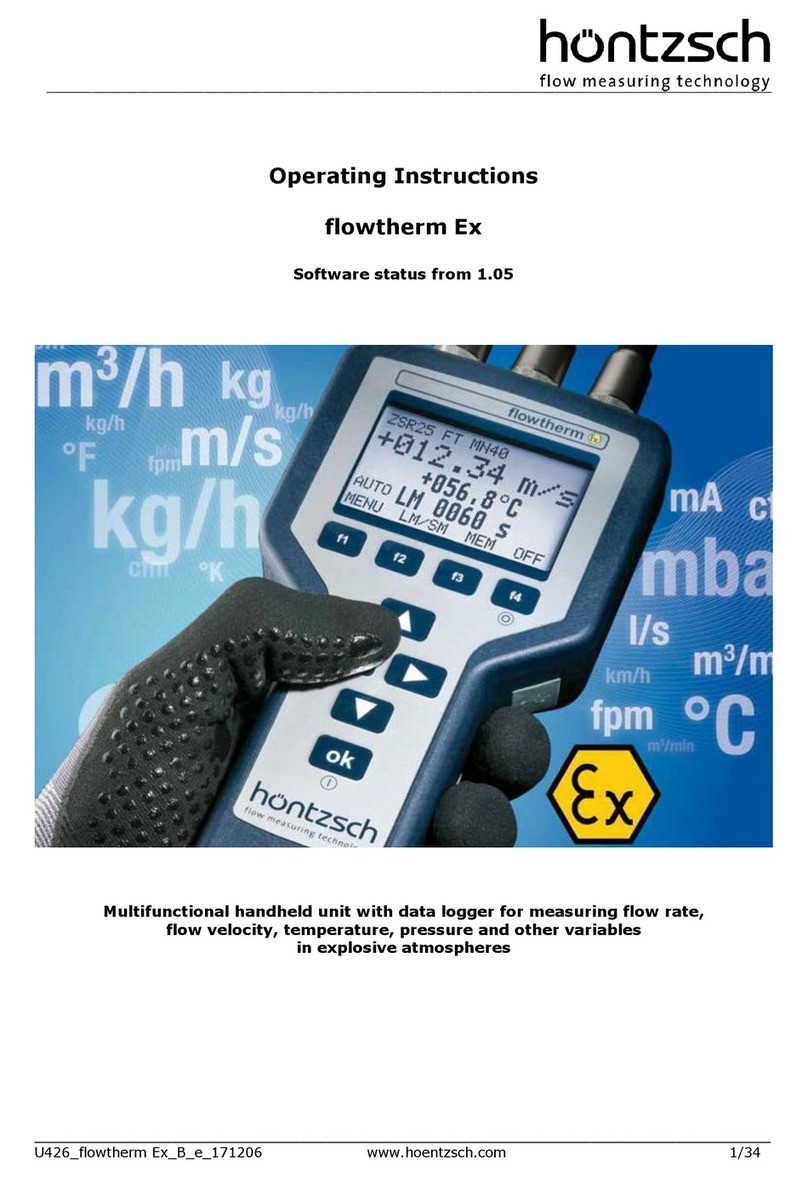
3of 4
Cleaning the sensor
Inapplications where dirt can
settle on the sensor, thermal flow
sensors should be cleaned at
regular intervals. Start by checking
the necessity for cleaning at short
intervals by visible inspection in
order to establish an optimal
cleaning interval.
Soiled measuring probes can be
cleaned with a paint brush or
small rag using a cleaning agent
which does not leave residue
when dry. Cleaning liquid must on
no account be allowed to
penetrate measuring probes
which are not tight; just dampen
rag or brush. When choosing the
cleaning agent pay attention to the
compatibility with the sensor
materials.
Connection line
For the connection between
sensor and evaluation unit - in the
case of shorter lines with no elec-
tromagnetic interference - a line
with simple copper shielded braid
can be used: LiYCY. In the case of
longer lines or lines with severe
electromagnetic interference a
double-shielded line only is to be
used: LiYCY-CY. Number of wires
and cross section in mm2for each
wire: 8·0.50. Maximum conductor
resistance for each wire: 10 W.
Resistances for fine-strand wires
according to VDE 0295 / IEC 228:
79 W/km with wire cross section
0.25 mm2,
39 W/km with wire cross section
0.50 mm2,
26 W/km with wire cross section
0.75 mm2
Circuit diagram
TA sensor with evaluation unit only
to be connected according to ap-
propriate circuit diagram.
EMC information
for installation in facilities with
interference emitting components:
U204_TA20_B_e_040527
Connection recommendation for a TA sensor with shorter lines with no
electromagnetic interference
TA sensor
RF-shielded housing evaluation unit
2...4 m
x m
Connection recommendation for a TA sensor with longer lines or lines with
severe electromagnetic interference
TA sensor 2...4 m
RF-shielded housing
x m
evaluation unit
Lay the shielding from analog
signal lines only on one side - if
possible at the evaluation unit - and
of low impedance. Twist non-
shielded lines: is effective against
balanced interference to source
terminals.
•
•
•
Lay shieldings from digital signal
lines on both sides over a large
area. In the case of potential differ-
ences between these points: lay
separate potential equalization
lines.
For connections on connection ca-
ble points of separation use pre-
ferred shielded plug connector.
When using terminals: place termi-
nals in an RF-shielded housing
and use EMC-correct cable lead-
ins. Contact outer shielding of the
connecting line to the cable lead-
ins.
All lines to be kept short! Loops in
the line can destroy protective
measures. Lay non-reserved wires
in a cable on both sides on earthed
wire potential. Lay cables and
wires close to the reference
potential, for instance side panels,
mounting plates or steel girders.
•
•Spacial separation of lines
emitting interference from
measuring cables and evaluation
•
•
•
•When using frequency converters
the influence of RF interference
emittance must be taken into con-
sideration from the outset and in-
creased active and passive anti-
interference measures must be
taken: Decouple the mains input
of the frequency converter by
means of a spark filter against
active interference emittances. In
addition this increases the
Special attention should be di-
rected to the motor wire. The
motor wire between converter and
motor should be shielded, the
Metallic parts in the service
cabinet - as for instance sub-rack
with control electronics or
mounting plates - very good large
area and RF-like conductive
Relays, contactors, electro valves
installed in the same circuit to be
wired by means of spark arrester
combinations or excess-voltage
alarge area and of low
impedance at sensor and
In the case of lines over 30 m or
lines with severe electromagnetic
interference - lines between
sensor and evaluation unit - the
use of a double-shielded line is
recommended: lay inner shield on
one side of the evaluation unit, lay
outer shield on both sides cover-
ing
•

























